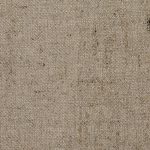You can easily make a DIY fabric refresher for your curtains and drapes to keep them smelling fresh and inviting. Mix 1 cup of distilled water, 1 tablespoon of white vinegar, and 1 tablespoon of your favorite essential oil in a spray bottle. Test it on a hidden area first, then spray lightly from about 12 inches away. You can customize the scent to match your home’s mood, and there are even more tips to explore!
Table of Contents
Key Takeaways
- Use a mixture of 1 cup distilled water, 1 tbsp fabric softener, and 1 tbsp white vinegar in a spray bottle.
- Test the solution on a small section of the curtains or drapes before full application.
- Spray lightly from 12 inches away to ensure even coverage without saturating the fabric.
- Customize scents with essential oils like lavender or citrus for a refreshing aroma.
- Refresh curtains and drapes every few weeks to maintain a pleasant scent and reduce odors.
The Benefits of Using a DIY Fabric Refresher
When you choose a DIY fabric refresher, not only do you save money, but you also gain control over the ingredients. This means you can avoid harsh chemicals that often come in commercial products. You’ll enjoy a fresher scent without worrying about allergens or irritants.
Plus, making your own refresher allows you to customize fragrances to suit your preferences, using natural essential oils or your favorite scents. You can also adjust the strength and formula, making it perfect for different fabrics and situations.
Additionally, crafting your fabric refresher can be a fun project, giving you a sense of accomplishment. With these benefits, switching to a DIY option is an easy choice that enhances your home while being gentle on your wallet and the environment.
Essential Ingredients for Your Fabric Refresher
Creating your own fabric refresher is simple, especially when you know the essential ingredients to include. You’ll need distilled water, which acts as the base for your solution.
Adding white vinegar helps neutralize odors, making it an important component. For a pleasant scent, consider essential oils like lavender, lemon, or eucalyptus. Just a few drops will do!
To enhance the mixture, you might choose to add a bit of rubbing alcohol; this helps the refresher dry faster on your fabrics.
Finally, a spray bottle is vital for easy application. With these ingredients, you’ll have everything you need to whip up a revitalizing spray that keeps your curtains and drapes smelling great!
Step-by-Step Instructions to Make Your Refresher
Making your own fabric refresher is a straightforward process that takes just a few minutes.
You’ll need to gather a few simple ingredients and follow these steps:
- Mix Ingredients: In a spray bottle, combine 1 cup of water, 1 tablespoon of fabric softener, and 1 tablespoon of vinegar. This mixture helps neutralize odors and freshens your fabrics.
- Shake Well: Secure the cap and give the bottle a good shake to thoroughly mix the ingredients. This guarantees an even application when you spray.
- Test and Spray: Before applying to your curtains or drapes, test the mixture on a small, inconspicuous area.
Once confirmed safe, spray lightly over your fabric and enjoy the fresh scent!
Customizing Scents to Match Your Home
Customizing scents to match your home can transform your space into a more inviting environment.
Start by considering the mood you want to create. Do you prefer fresh and energizing, or calming and soothing? Essential oils are a great way to personalize your fabric refresher. For a bright feel, try citrus oils like lemon or orange. For a cozy vibe, consider lavender or vanilla.
Consider the mood you want to create with essential oils—bright citrus for energy or soothing lavender for coziness.
Mix and match scents until you find the perfect blend that resonates with your style. You can also use seasonal scents to keep your home feeling fresh year-round.
Just remember to test a small area of your fabric before spraying to guarantee the scent and oil won’t affect the material.
Enjoy creating a welcoming atmosphere!
Tips for Application and Maintenance
Once you’ve found the perfect scent blend for your space, it’s important to apply and maintain your fabric refresher properly for the best results.
Here are some tips to keep your curtains and drapes smelling new:
- Test First: Always spray a small, hidden area before full application to verify the fabric won’t discolor.
- Even Coverage: Hold the spray bottle about 12 inches away, and apply in a sweeping motion for an even distribution, avoiding saturation.
- Regular Revitalizing: Aim to refresh your fabrics every few weeks, or as needed, to maintain that lovely scent without overwhelming it.
With these tips, you’ll enjoy a delightful aroma in your home while keeping your curtains looking great!
Frequently Asked Questions
How Often Should I Use the DIY Fabric Refresher?
You should use the refresher whenever you notice odors or after heavy use. Typically, a monthly application works well, but adjust based on your environment and personal preferences to keep your fabrics smelling fresh.
Can I Use This on All Types of Fabrics?
Not all fabrics react the same way; while some thrive with a refresher, others might not. You’ll want to test a small area first to guarantee your chosen fabric handles it well without damage.
Is It Safe for Pets and Children?
You should always check the ingredients before using any product around pets and children. If it’s made with safe, non-toxic components, it’s likely fine. Just guarantee proper ventilation and monitor for any reactions.
How Long Will the Scent Last on My Curtains?
Imagine walking into a room filled with a fresh, inviting aroma. The scent on your curtains typically lasts a few days, depending on airflow and fabric type, so enjoy that delightful fragrance while it lingers!
Can I Store Leftover Fabric Refresher for Future Use?
Yes, you can store leftover fabric refresher for future use. Just make sure it’s in a sealed container, away from direct sunlight, and check for any changes in scent or consistency before using it again.
- The Difference Between Gabardine and Poplin Fabric - June 23, 2025
- What Is Tropical Gabardine? Your Guide to This Lightweight Weave - June 23, 2025
- Is Gabardine a Formal Fabric? When to Wear It for a Polished Look - June 23, 2025






